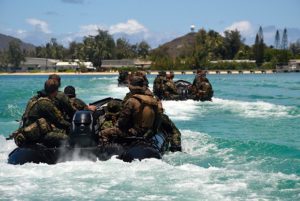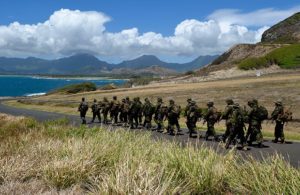In response to the evolving international security environment, the Canadian Army is putting greater emphasis on light forces. Responsive and nimble, even in the most difficult terrain or in urban environments, light forces are more necessary than ever to meet today’s military challenges.
While the Army has ably demonstrated the capability to field light forces, such as those that fought in the mountains of Afghanistan, it does not have units specifically designed for light force missions. The Light Forces Initiating Directive, issued in July 2016 by the Army’s commander, Lt. Gen. Paul Wynnyk, will change that.
“We’ve had light infantry battalions in the Canadian Army going back to the 1990s,” explained Lt. Col. Alex Haynes, commandant of the Infantry School and the deputy director of the Royal Canadian Infantry Corps. “They were never truly considered distinct battalions and given all those specific types of roles. They were simply seen as mechanized battalions without vehicles. And indeed they were organized that way. The Light Forces Initiative is looking to bridge that gap so these battalions are seen as true light battalions that can be given all those light missions.”

The initiative is a long-term, multi-stage effort that is expected to be complete by 2025 and, Haynes added, is achievable using mostly existing resources.
“It’s just a matter of organizing units so they are no longer just mechanized battalions in waiting,” he said. “There will still be 3rd Battalion Royal Canadian Regiment, 3rd Battalion Princess Patricia’s Canadian Light Infantry, and 3rd Battalion Royal 22e Régiment. Those organizations will stay the same but within them there will be modifications to make them more responsive, deployable and able to operate in traditional light environments.”
Current Canadian thinking on light forces, Haynes added, is focused more on responsiveness than any particular set of tactics.
“It means the ability to deploy within a set number of days, or hours, or weeks, and the ability to quickly get from Canada to wherever we’re going. The scope of what they can do is quite broad but the key characteristic is that they would do it faster than the rest of the Army could.”
Speed aside, the focus on light forces is also necessary, in part, because modern armies are very likely to be fighting in bustling cities.
“Terrorist organizations, or even these pseudo-military organizations that we tend to face in places like Afghanistan, Iraq or Africa, will tend to operate in the urban environment,” said Haynes. “They can blend into the civilian population. And it also provides them with resources in terms of food, fuel, and recruits. The other factor is that, as every UN report has talked about for the last 10 years, urban areas are becoming massive and there are these megacities that exist, largely in the third world, in places where the Canadian Forces can likely expect to operate.”
While light forces are designed to be less reliant on vehicles than others, they cannot exist entirely independently of them, Haynes noted.

“What we want to do is make sure a light battalion has enough wheeled transport that is lightweight enough and can be transported by a Chinook helicopter,” he added. “That is one of the key criteria. We want to make sure we have enough of those that can move things too heavy to be carried on peoples’ backs. So, the heavier weapons systems, ammunition, fuel, water.”
Infantry is central to the Light Forces Initiative but, Haynes explained, the many Army elements playing a supportive role to infantry will also be part of the conversation.
“In order to do this right, we need to think about how engineers and artillery – and to a degree armoured and the service support trades – can enable a light force,” he said. “For example, you’re going to have to have some pretty tough medics who are able to march over mountains with these light infantry battalions.”
Light forces are sometimes brought to the battlefield by helicopters, ships or amphibious vehicles, which is why the Light Forces Initiative is not only an Army-wide matter but one for the Canadian Armed Forces as a whole.
“As with anything we do, it’s a joint effort in that we don’t fight in isolation,” said Haynes. “We could design the best light infantry battalion in the world but if they don’t have all the other parts that come to the game, because we always fight as a combined arms team, then they will not be able to operate as effectively, or arguably at all, in the way that the Army Commander has envisioned.”


Comments are closed.